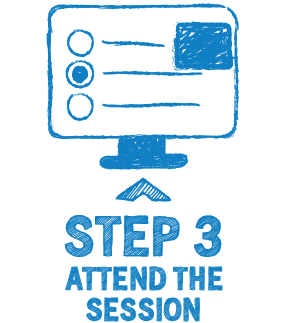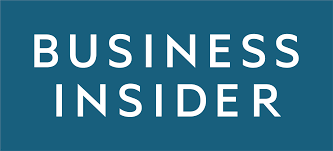Difference between Molecules and Compounds
Grade 6 Science Worksheets
In this article, you will learn:
- What is a molecule?
- What is a compound?
- Difference between Molecule and Compound
- FAQs
Difference between Molecules and Compounds - Grade 6 Science Worksheet PDF
This is a free printable / downloadable PDF worksheet with practice problems and answers. You can also work on it online.
|
Untimed | |
Sign up with your email ID to access this free worksheet.
"We really love eTutorWorld!"
"We really love etutorworld!. Anand S and Pooja are excellent math teachers and are quick to respond with requests to tutor on any math topic!" - Kieran Y (via TrustSpot.io)
"My daughter gets distracted easily"
"My daughter gets distracted very easily and Ms. Medini and other teachers were patient with her and redirected her back to the courses.
With the help of Etutorworld, my daughter has been now selected in the Gifted and Talented Program for the school district"
- Nivea Sharma (via TrustSpot.io)
Before we dive into the difference between molecules and compounds, let us first understand the two separately.
What is a molecule?
A molecule is a group of atoms that are bonded together. These atoms can be the same or different, and they can be arranged in different ways.

What is a compound?
A compound is a substance made up of two or more different elements (types of atoms) chemically combined in a fixed ratio. The elements in a compound are combined in such a way that they cannot be easily separated or broken down into their individual elements by physical means.

Examples of compounds include:
- Water (H2O) which is made up of two hydrogen atoms and one oxygen atom
- Carbon dioxide (CO2) which is made up of one carbon atom and two oxygen atoms
- Salt (NaCl) which is made up of one sodium atom and one chlorine atom
- Sucrose (C12H22O11) which is made up of 12 Carbon atoms, 22 Hydrogen atoms and 11 Oxygen atoms
- methane (CH4) which is made up of one Carbon atom and four Hydrogen atoms
It’s worth nothing that a molecule and a compound can be used interchangeably in many cases, but not always. A compound is always made of two or more different elements, while a molecule can be made of only one type of element (like Oxygen molecule, O2).
“There have been times when we booked them last minute, but the teachers have been extremely well-prepared and the help desk at etutorworld is very prompt.
Our kid is doing much better with a higher score.”
6th Grade Tutoring
eTutorWorld offers Personalized Online Tutoring for Math, Science, English, and Standardised Tests.
Our Tutoring Packs start at just under $22.49 per hour, and come with a moneyback guarantee.
Schedule a FREE Trial Session, and experience quality tutoring for yourself. (No credit card required.)
Difference between Molecule and Compound
A molecule is a group of atoms that are bonded together, while a compound is a substance made up of two or more different elements chemically combined in a fixed ratio.

The main difference between a molecule and a compound is the elements they are made of:
- A molecule can be made up of atoms of the same element, such as oxygen (O2) which is made up of two oxygen atoms.
- A compound must be made up of atoms of two or more different elements, such as water (H2O) which is made up of two hydrogen atoms and one oxygen atom.
- In terms of visibility, molecules are often too small to be seen with the naked eye and can only be observed using tools such as microscopes, while compounds can sometimes be seen as they can exist in macroscopic forms.
Examples of molecules include:
- Oxygen (O2) which is made up of two oxygen atoms
- Nitrogen (N2) which is made up of two nitrogen atoms
- Chlorine (Cl2) which is made up of two chlorine atoms
Examples of compounds include:
- Water (H2O) which is made up of two hydrogen atoms and one oxygen atom
- Carbon dioxide (CO2) which is made up of one carbon atom and two oxygen atoms
- Salt (NaCl) which is made up of one sodium atom and one chlorine atom
- Sucrose (C12H22O11) which is made up of 12 Carbon atoms, 22 Hydrogen atoms and 11 Oxygen atoms
- Methane (CH4) which is made up of one Carbon atom and four Hydrogen atoms
In summary, all compounds are molecules, but not all molecules are compounds.
Do You Stack Up Against the Best?
If you have 30 minutes, try our free diagnostics test and assess your skills.
Molecules and Compounds FAQS
Can a molecule be made up of atoms of only one element?
Yes, a molecule can be made up of atoms of the same element, such as oxygen (O2) which is made up of two oxygen atoms.
Is a compound always made up of atoms of different elements?
Yes, a compound must be made up of atoms of two or more different elements, such as water (H2O) which is made up of two hydrogen atoms and one oxygen atom.
Is a molecule always a compound?
No, not all molecules are compounds. A molecule can be made up of atoms of the same element, while a compound must be made up of atoms of at least two different elements.
Can a compound be broken down into its individual elements easily?
No, the elements in a compound are chemically bonded together, and they cannot be easily separated or broken down into their individual elements by physical means.
Can the ratio of atoms in a molecule be different than a compound?
Yes, the ratio of atoms in a molecule can be different than a compound, for instance in water, the ratio of hydrogen to oxygen is 2:1, but in hydrogen peroxide H2O2 the ratio of hydrogen to oxygen is 2:2.
Are all chemical compounds are molecules?
Yes, all compounds are molecules, but not all molecules are compounds.

Kathleen Currence is one of the founders of eTutorWorld. Previously a middle school principal in Kansas City School District, she has an MA in Education from the University of Dayton, Ohio. She is a prolific writer, and likes to explain Science topics in student-friendly language. LinkedIn Profile
Affordable Tutoring Now Starts at Just $22.49
eTutorWorld offers affordable one-on-one live tutoring over the web for Grades K-12. We are also a leading provider of Test Prep help for Standardized Tests (SCAT, CogAT, MAP, SSAT, SAT, ACT, ISEE, and AP).
What makes eTutorWorld stand apart are: flexibility in lesson scheduling, quality of hand-picked tutors, assignment of tutors based on academic counseling and diagnostic tests of each student, and our 100% money-back guarantee.
Whether you have never tried personalized online tutoring before or are looking for better tutors and flexibility at an affordable price point, schedule a FREE TRIAL Session with us today.
*There is no purchase obligation or credit card requirement
Grade 6 Science Worksheets
- Inquiry process
- Nature of Science
- Scientific Inquiry
- Inquiry, Analysis and Problem Solving
- Ethical Practices
- Science and Society
- Biotic and Abiotic Factors
- Impact of Organisms
- Adaptation
- Spheres of Earth
- Natural Resources
- Environmental Issues
- Conservation of Earth
- Understanding Technology
- Abilities To Do Technological Design
- Structure of Earth
- Solar System
- Rocks and Fossils
- Earth Systems
- Plate Tectonics
- Evolution
- Magnetic Field of Earth
- Geologic Time
- Materials and Processes That Shape a Planet
- Astronomy
- Ecology
- Energy
- Kinetic and Potential Energy
- Energy Transfer
- Matter and its Structure
- States of Matter
- Physical and Chemical Changes
- Force and Motion
- Electricity and Magnetism
- Wave Interactions
- Sound
- Light
- Introduction to Life Science
- The Origin & History of Life On Earth
- Plant and Animal Cells
- Parts of a Cell
- The Cell Cycle
- How Living Organisms Get Energy
- Classification of Organisms
- How Plants Grow & Reproduce
- The Human Respiratory System
- The Human Cardiovascular System
- The Human Digestive System
- The Human Endocrine Systems
- The Human Nervous System
- The Human Muscular System
- The Human Skeletal System
IN THE NEWS

Our mission is to provide high quality online tutoring services, using state of the art Internet technology, to school students worldwide.
Online test prep and practice
SCAT
SSAT
ISEE
PSAT
SAT
ACT
AP Exam
Science Tutoring
Physics Tutoring
Chemistry Tutoring
Biology Tutoring
Math Tutoring
Pre-Algebra Tutoring
Algebra Tutoring
Pre Calculus Tutoring
Calculus Tutoring
Geometry Tutoring
Trigonometry Tutoring
Statistics Tutoring
Quick links
Free Worksheets
Fact sheet
Sales Partner Opportunities
Parents
Passive Fundraising
Virtual Fundraising
Our Expert Tutors
Safe and Secure Tutoring
Interactive Online Tutoring
After School Tutoring
Elementary School Tutoring
Middle School Tutoring
High School Tutoring
Home Work Help
Math Tutors New York City
Press
©2022 eTutorWorld Terms of use Privacy Policy Site by Little Red Bird
©2022 eTutorWorld
Terms of use
Privacy Policy
Site by Little Red Bird










